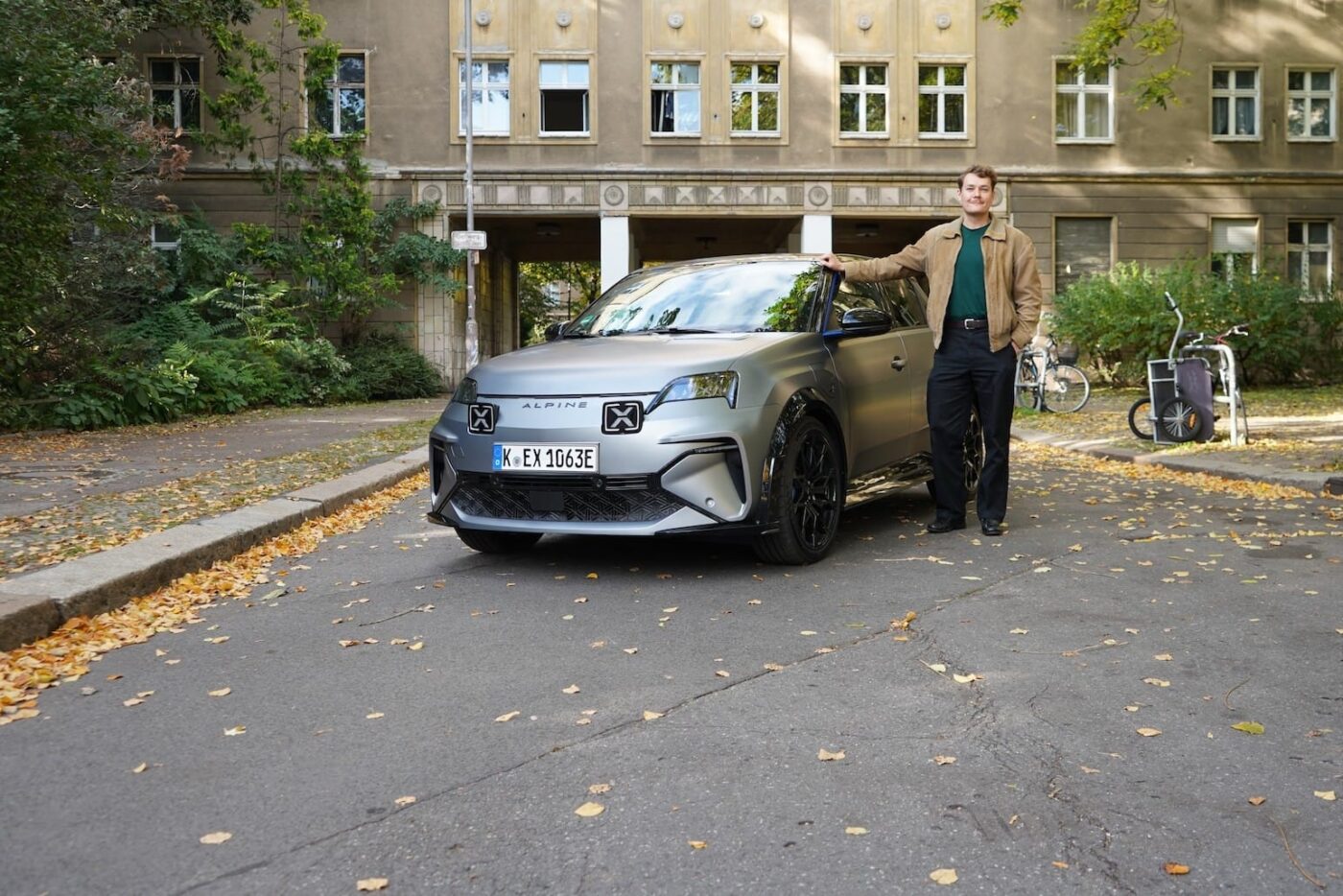
Testing the Alpine A290 GTS – Is the R5’s performance version worth the hefty premium?
The design of the electric Renault 5 family is shaped by retro charm. Moreover, the French company also took inspiration from its corporate history when it comes to model strategy and the nomenclature of the different versions. The fact that the performance version of the small car now carries the arrow-shaped A on the steering wheel instead of the familiar Renault rhombus may initially come as a surprise.
But even the second sportiest variant of the first R5 generation was offered as the R5 Alpine between 1976 and 1983. Since Alpine has meanwhile evolved from a pure sports car manufacturer into the Group’s premium brand, it is only logical to market the more powerful hot hatch version under this name again.
It also makes sense historically that the uncompromising spearhead of the range, the R5 Turbo 3E with 400 kW of power, appears as a Renault. After all, it is considered the spiritual successor to the legendary Renault 5 Turbo built from 1980 to 1985, which drifted to victory shortly after its debut with a mid-mounted engine and rear-wheel drive on the snowy mountain stages of the 1981 Rallye Monte Carlo.
But it wasn’t only the wide-bodied Turbo that was a popular rally tool back then: Renault itself and several private teams entered specially prepared R5 Turbos in various championships. History repeats itself here as well: with the Alpine A290 Rally, Renault’s subsidiary Alpine offers its first fully electric customer racing car ex works.
The A290 is still a rare sight
The designers clearly had fun playing with the rally theme on the A290. The square extra lights with their X-shaped light signature are intended to recall the auxiliary headlights of historic Monte Carlo contenders. They are joined by subtle wheel arch extensions and striking front and rear aprons with diffuser inserts. More pronounced side skirts and distinctive creases along the sides round off the customisation of the underlying R5 design.
The end result drew plenty of attention during my test drive and scored a lot of sympathy within my circle of acquaintances. At first glance, however, the small car also provokes some confusion among passers-by – people recognise the basic form of the R5, but seem initially irritated by the body kit, the auxiliary headlights and the absence of the Renault logo.



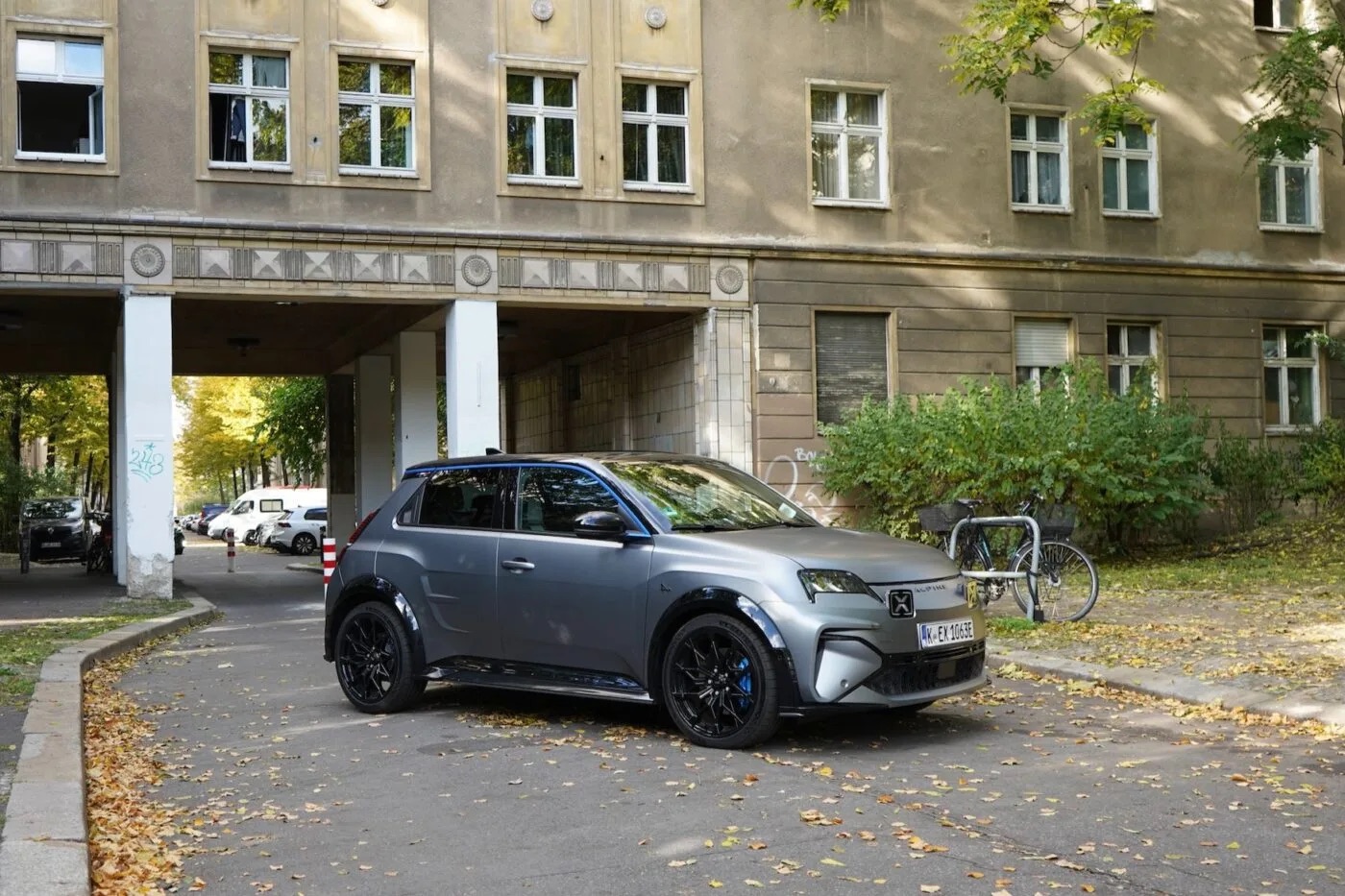
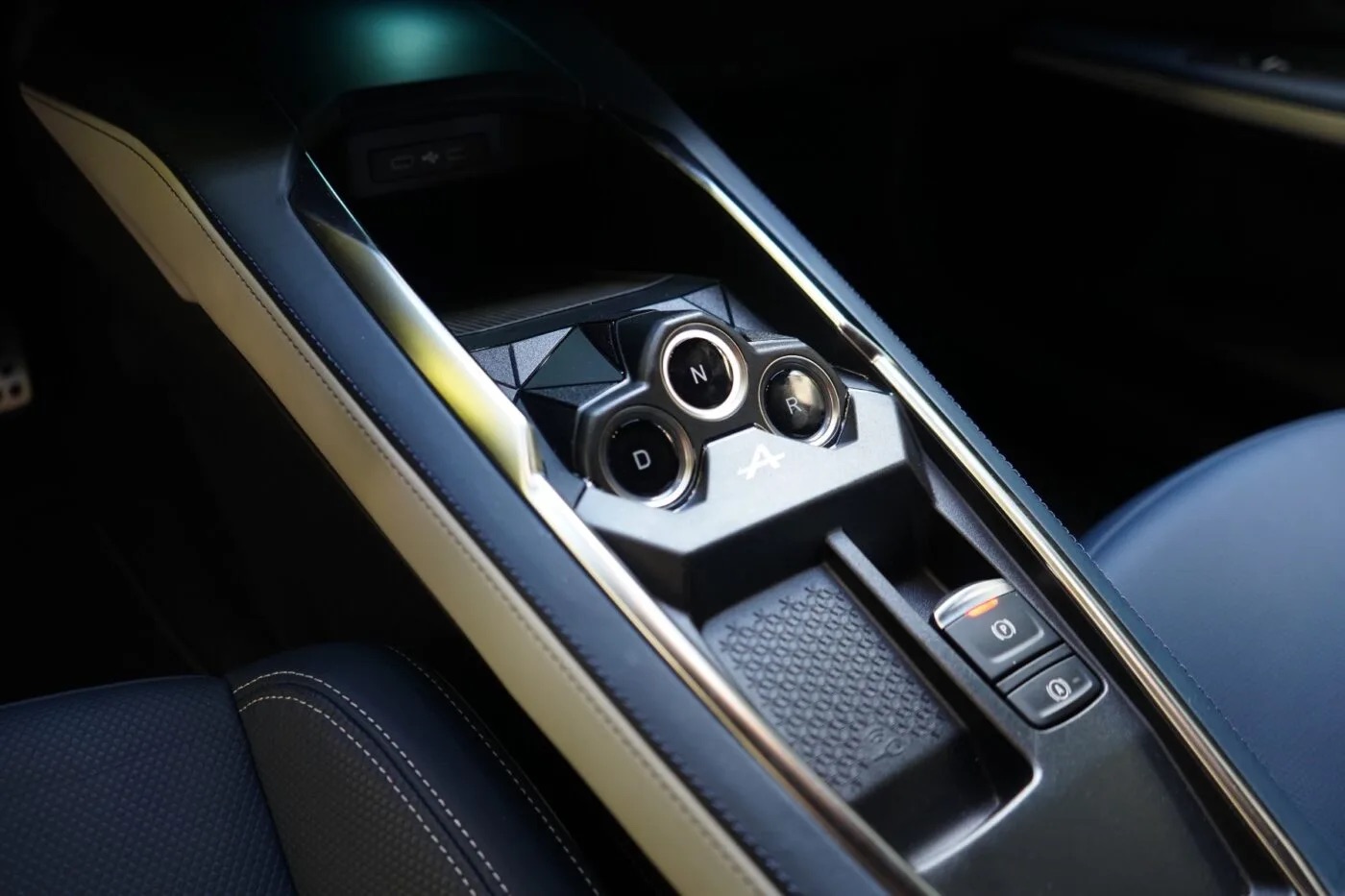

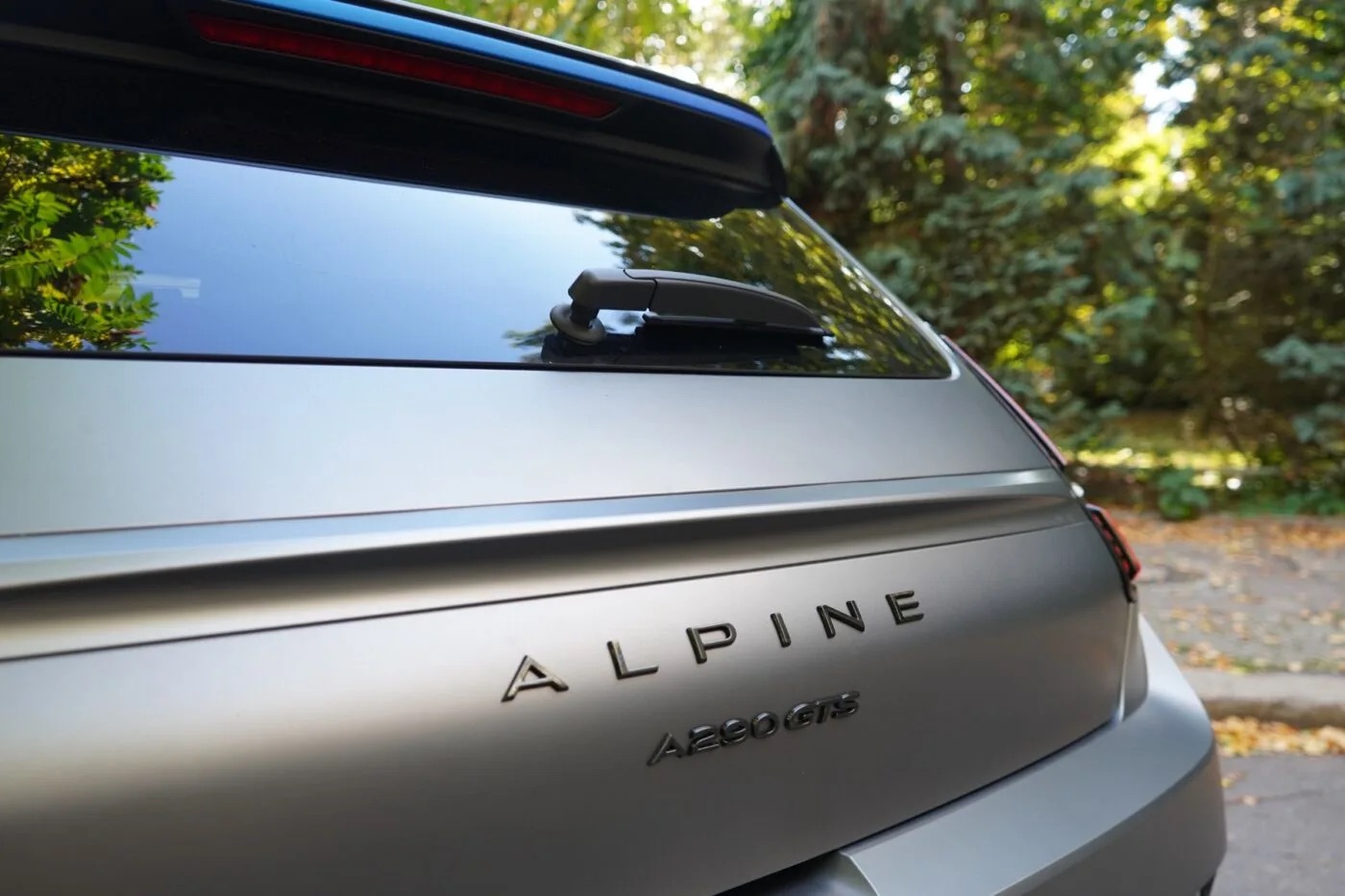
The six centimetres of extra track width are noticeable
It is hardly surprising that there are many driving similarities with the R5 E-Tech Electric: even the sibling with the Renault badge feels very grown-up for a small car. This is where the multi-link rear axle makes a positive impact, which is anything but a given in the B-segment.
Thanks to its chunky Michelin tyres (225/40/19-inch) and 60 millimetres of additional track width, the A290, measuring just 3.99 metres, sits on the road like a plank even at high speeds. At 1.82 metres wide, Alpine’s entry-level model is unusually broad for a small car.
The engineers in Dieppe did not hold back in chassis terms. They not only made fine adjustments but also significantly reinforced the hardware and used lightweight components in certain places. The A290, for example, features aluminium steering knuckles and a motor frame also made of the light alloy. As on the A110 sports car icon, dampers with hydraulic bump stops are intended to ensure decent ride comfort despite the dynamic base set-up. Alpine’s entry model copes well even with uneven cobblestones.
A hardcore sports car looks different
The attention to detail in the chassis development is definitely noticeable. For an electric small car, the A290 feels pleasingly agile. The steering provides more feedback than is typical for an electric car, yet remains light enough for everyday use. In an earlier test, I was already able to drive Alpine’s entry model on a racetrack in Mallorca – the car genuinely turns in willingly and offers plenty of driving fun.
Anyone expecting a thoroughbred sports machine may still be somewhat disappointed. The A290 lacks the uncompromising nature that once set the hot hatches from our western neighbour apart.
Renault’s premium subsidiary is apparently aware that the target group is looking more for a fun, stylish and generously equipped everyday companion than a road-going rally car. On the commute or the run to the organic supermarket, you cannot push the A290 anywhere near its limits anyway, so you don’t notice its minor dynamic shortcomings. Even on winding mountain roads, the traffic regulations won’t allow it.
| Alpine A290 GTS | Alpine A290 GT | |
|---|---|---|
| Drive | FWD | FWD |
| Output | 160 kW | 130 kW |
| Torque | 300 Nm | 285 Nm |
| Acceleration | 6.4 s | 7.4 s |
| Top speed | 170 kph | 160 kph |
| WLTP range | 362 km | 379 km |
| Battery | 52 kWh | 52 kWh |
| Charging capacity DC | 100 kW | 100 kW |
| Charging time DC 10-80% | 30 min | 30 min |
| Price | 45,000 euros | 39,000 euros |
It performs particularly well in the mid-range
The somewhat overzealous traction control dampens the driving pleasure more. With a 160 kW and 300 Nm small car with front-wheel drive, it is not surprising that the front wheels struggle to put the power down cleanly – spinning wheels are virtually guaranteed. But the anti-slip control tries its hardest to prevent this. As a result, the A290 feels weaker off the line than it actually is, even in Sport mode.
It only starts to pull strongly above around 20 kph, just as you would expect from a sporty electric car. The data sheet of the top GTS version we tested states that the nearly 1.5-tonne R5 in full kit can accelerate from zero to one hundred in 6.4 seconds when needed. Given the strong punch in the mid-speed range, that seems perfectly plausible.
At higher speeds, from about 120 kph upwards, it runs out of breath a bit – the spaceship-like sound effects in Sport mode feel exaggerated. The visual effects on the driver display, reminiscent of Tesla’s Plaid animations, leave a similar impression.
The top speed of 170 kph, which isn’t exactly impressive for a hot hatch, is only achievable in Normal and Sport mode. In the Eco mode called “Save”, propulsion of the A290 GTS is capped at 130 kph. Considering its good road holding, the reason the pocket rocket isn’t allowed to run faster is probably efficiency rather than safety.
The motorway consumption is not a highlight
In addition to the pleasant suspension comfort, there is very good noise insulation and comfortable seats that make you feel well supported thanks to their pronounced side bolsters. The assistance systems work reliably and smoothly. This applies especially to the adaptive cruise control, which is extremely easy to operate and impresses with its gentle braking and acceleration. For a small car, this is truly remarkable.
And yet the motorway is not the A290’s home turf, mainly due to its hefty consumption at triple-digit speeds. On the drive from Berlin to Hamburg, it averaged more than 20 kWh/100km, even though I crawled along in the slipstream of a delivery van at 110 kph for quite some time. As a result, of the 364 WLTP kilometres, you end up with just over 200 on long journeys.
The likely reason for the high consumption above rural-road speeds is the comparatively poor drag coefficient for an electric car. Alpine does not give an official figure for the A290, but the aerodynamic drag is likely similar to that of the Renault 5 E-Tech Electric. The retro runabout has a value of around 0.30. Some full-size electric SUVs are much more efficient aerodynamically. Translating a design whose basic shape dates back to the early seventies – with similar proportions and a large frontal area – into the modern era inevitably comes with drawbacks. Due to their short length, small cars are also generally prone to turbulence at the rear, giving this vehicle category a fundamental aerodynamic handicap.
In city traffic, the lively little fellow feels much more at home – thanks to strong recuperation, you can even undercut the WLTP consumption of 16.5 kWh/100km. Since a small update in mid-October, all A290s now support one-pedal driving.
The range display, which predicts the radius achievable with the current battery status under different driving conditions, is genuinely helpful. Nevertheless, both the R5 and the A290 could use more menu items offering information on consumption and efficiency.
The A290 slightly exceeds its peak charging power
The peak charging power of 100 kW claimed by Renault is more than realistic. Shortly after the start of the charging process, it even slightly exceeds this at a battery level of 15 per cent. The charging curve remains high for a long time. Even at 75 per cent battery, it was still pulling 56 kW. Thanks to a preconditioned battery, the charging window from 10 to 80 per cent took 29 minutes. The factory’s claim of half an hour was thus quietly undercut. Also exemplary: the A290 charges at AC stations with 22 kW as standard.
The charging route planner of the Android-based navigation system works very well and convinces with its quick response. However, it is a bit too cautious. I set off in Berlin with 90 per cent battery, and the system still suggested two 15-minute charging stops on the roughly 290-kilometre route to Hamburg. One slightly longer stop would have been entirely sufficient in practice.
A customised R5 cockpit in all the right places
During charging, the driver has plenty of time to take a look at the lovingly upgraded interior compared with the R5 cockpit. There is probably no other B-segment car offering such a high-quality interior. While you do find some hard plastics here and there, the overall material mix is impressive.
Unique features compared with the Renault 5 include the sporty Alpine steering wheel with a thicker rim and the three selector buttons for the driving mode positioned on the centre console – a detail the designers borrowed from the A110.
A real highlight is the two-tone seats with a stitched-in Tricolore on the backrest. These are the kind of details that make the little French car stand out from the crowd. Unfortunately, the seating position is a bit too high for a hot hatch – in the A290, it almost feels like a crossover.
In terms of space, it is more everyday car than sports car. At 326 litres, the boot is truly generous for the segment. With the rear bench folded, the storage space even expands to 1,106 litres. By comparison: the boot of the Opel Corsa Electric holds 267 litres. However, the large boot in Renault’s two electric small cars comes at the expense of limited legroom in the rear.
Conclusion
The A290 is probably the coolest electric small car on the market – but that is not a parameter that should influence an objective test. And the first fully electric Alpine is also one of the most expensive models in the B-segment. The 130 kW base version GT already costs 39,000 euros, and the top version A290 GTS we tested is another 6,000 euros dearer.
For only 3,000 euros more, you can get the spacious family SUV Scénic E-Tech Electric from Renault with the large 87 kWh battery. With 614 kilometres WLTP range, it is fully long-distance capable and a good all-rounder. Interestingly, Alpine’s hot hatch and the electric Scénic share the same motor.
Of course, the two French cars target completely different audiences. For hardly any Alpine prospect would the Scénic be an alternative. But the comparison clearly shows that in this price class, there are models offering considerably more car for the money – and that the sporty sibling of the R5 demands a certain willingness to compromise from its buyers. Besides the steep price, its high motorway consumption weighs particularly against it.
Most customers are unlikely to be bothered by this, as they probably have another car in the garage for long journeys. And as a fun and stylish second car, the A290 cuts a great figure.
Whether the exclusivity and sporty looks are worth the hefty premium over the regular Renault 5 ultimately comes down to taste and budget. Its sibling, which is almost 10,000 euros cheaper in comparable specification, already looks very good and also offers a solid portion of driving fun. But the “want-to-have” effect is definitely even stronger with the first electric Alpine.

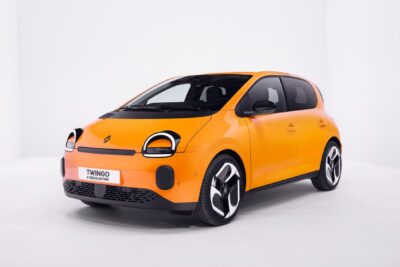


2 Comments